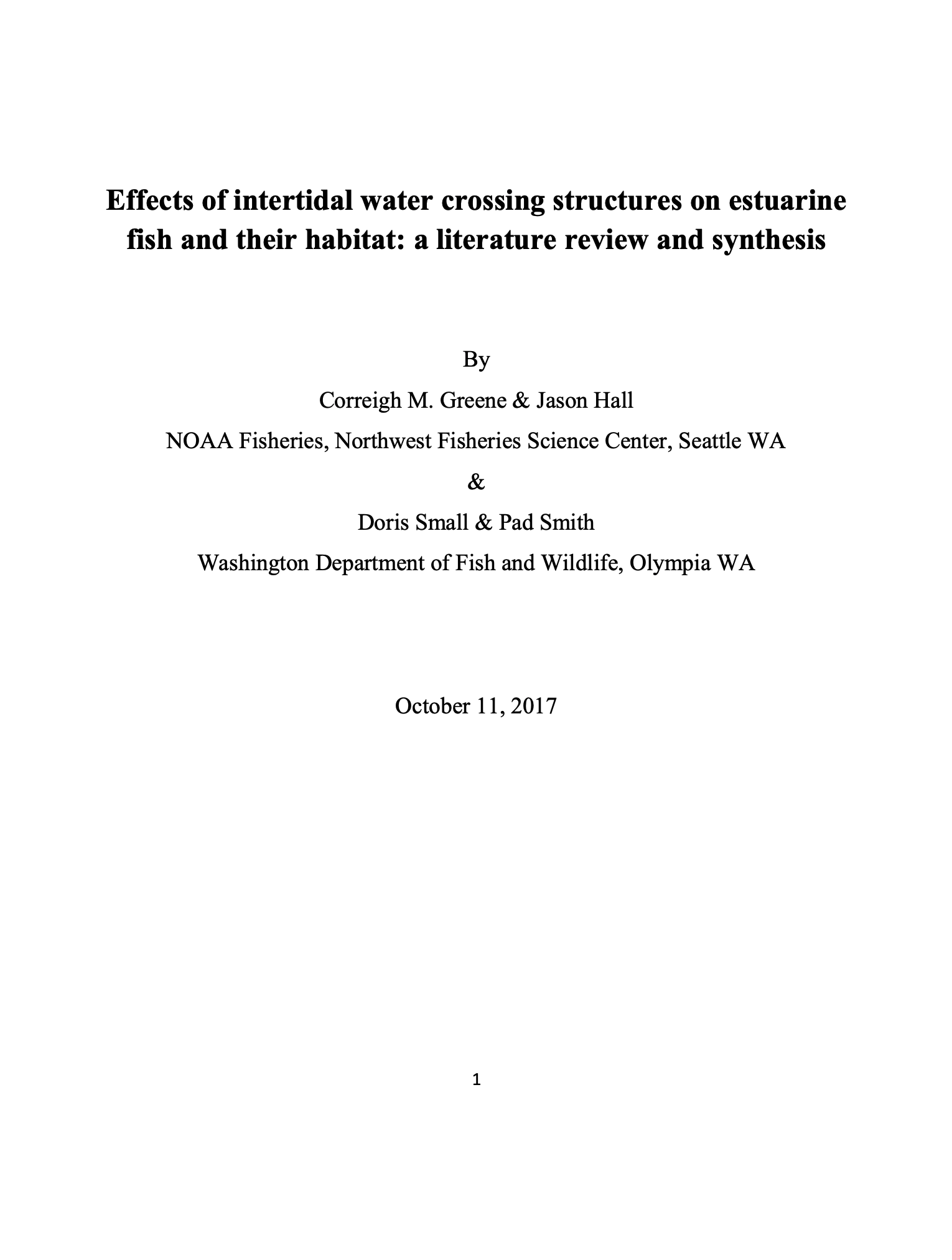
For hundreds of years, people have built water crossing structures to enable the transportation of people, livestock, vehicles, and materials across rivers and other bodies of water. These structures have often created barriers to fish passage, an issue which has recently drawn intense scrutiny due to concerns over impacts to anadromous fish. While much work has focused on the impacts of freshwater crossing structures, intertidal structures have received less attention. This may be due to the importance of passage for adult anadromous fish in freshwater, and that bidirectional flows in intertidal environments complicate interpretation of structures as barriers. Intertidal water crossing structures likely have adverse impacts on juvenile life stages of fish due not only to impacts to passage, but also to impacts to estuarine habitats extensively used by these species as rearing environments. Examining the impacts of intertidal water crossing structures only through the lens of fish passage therefore misses key aspects to how these structures can affect fish.
